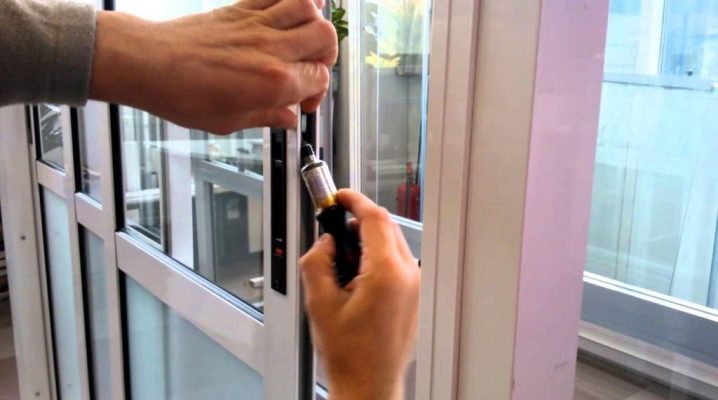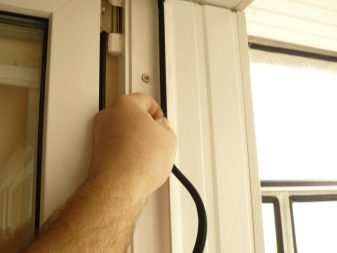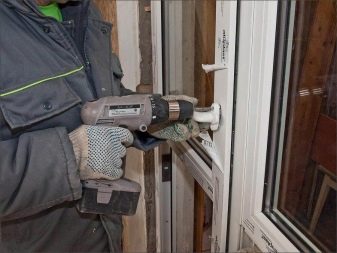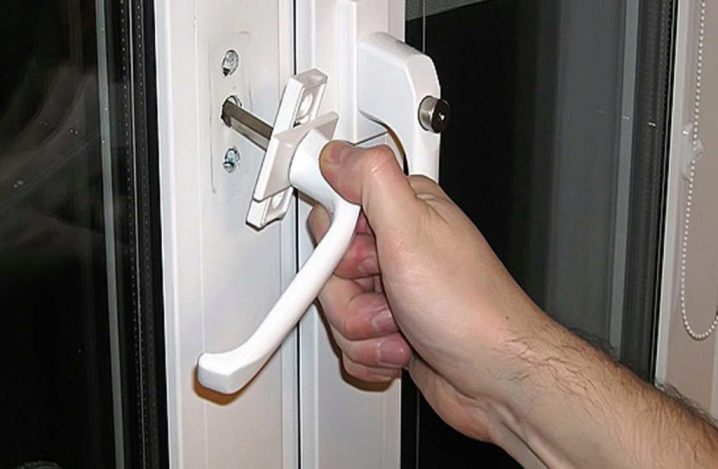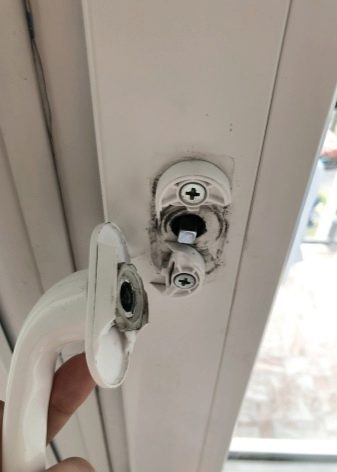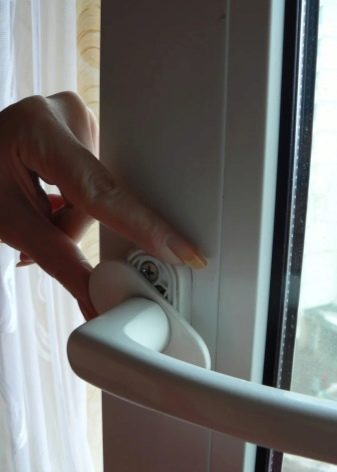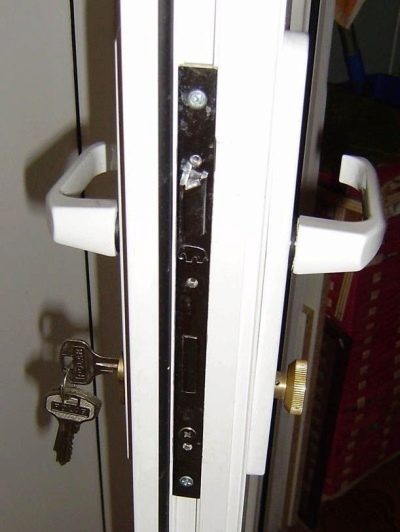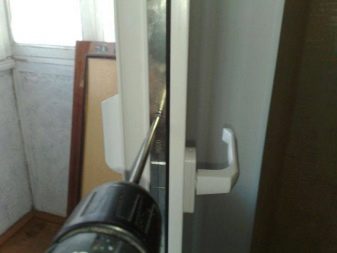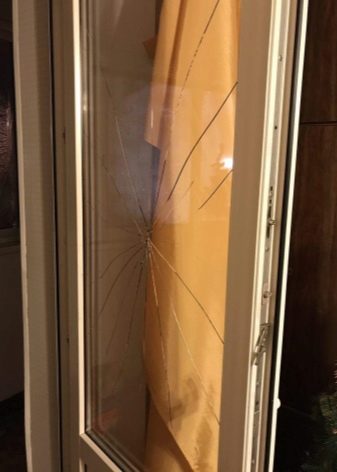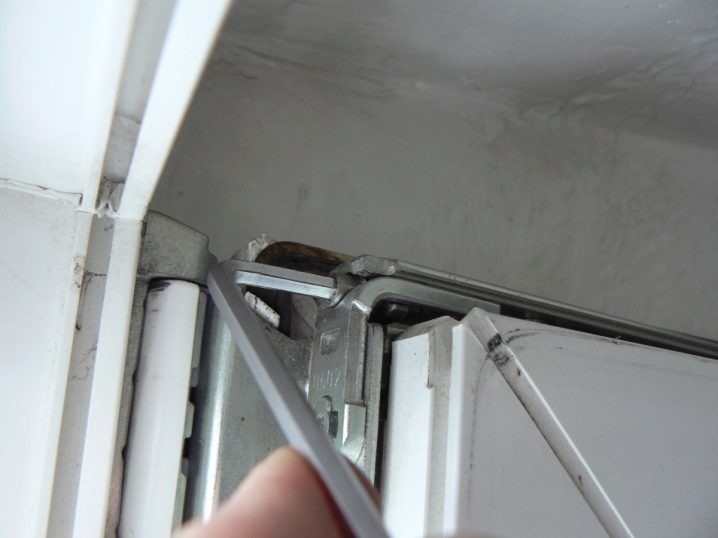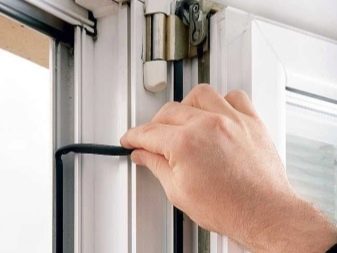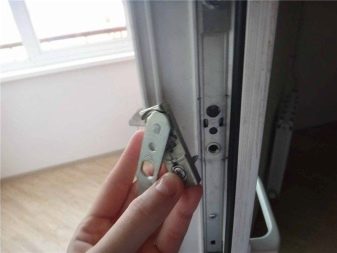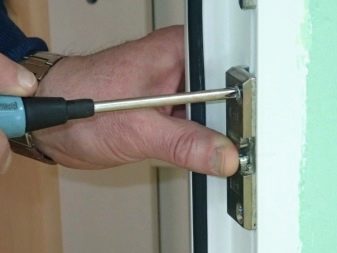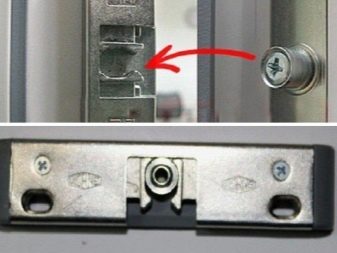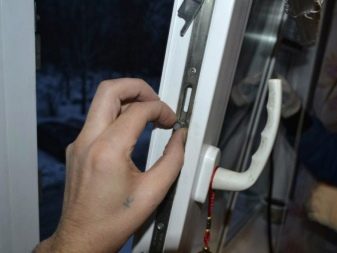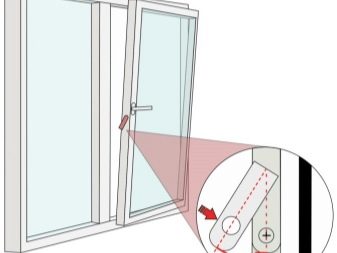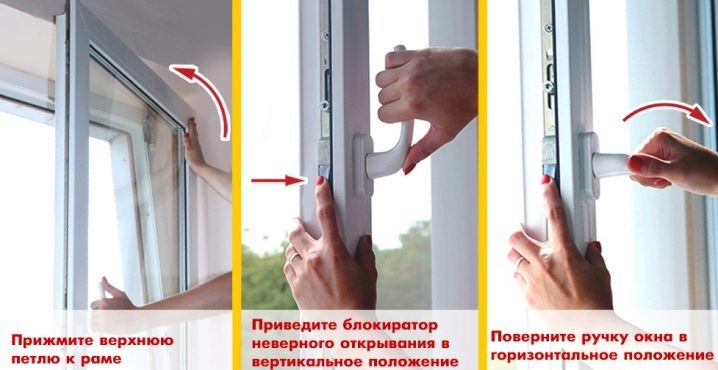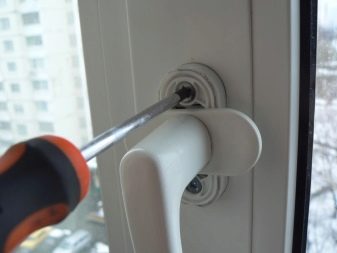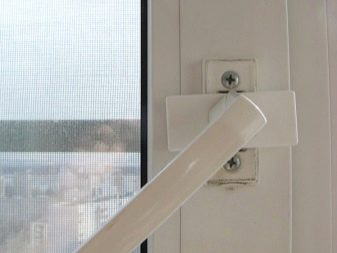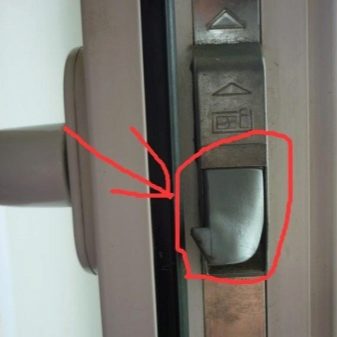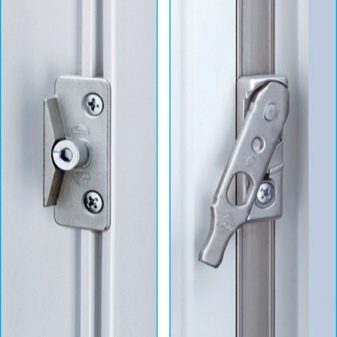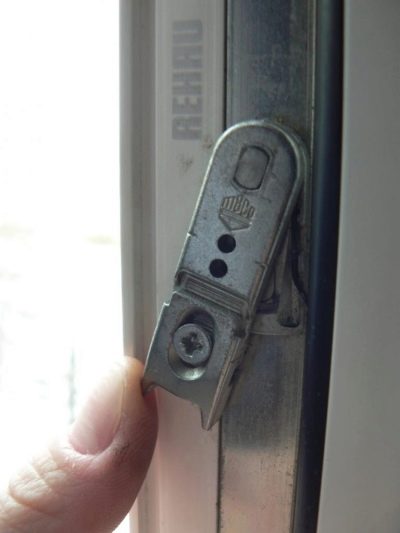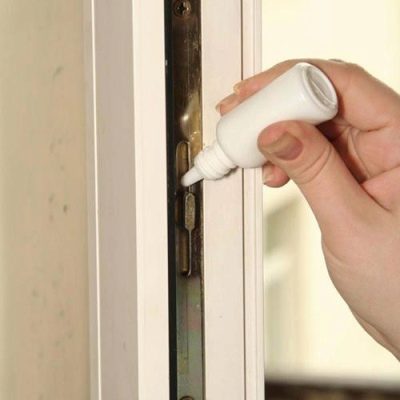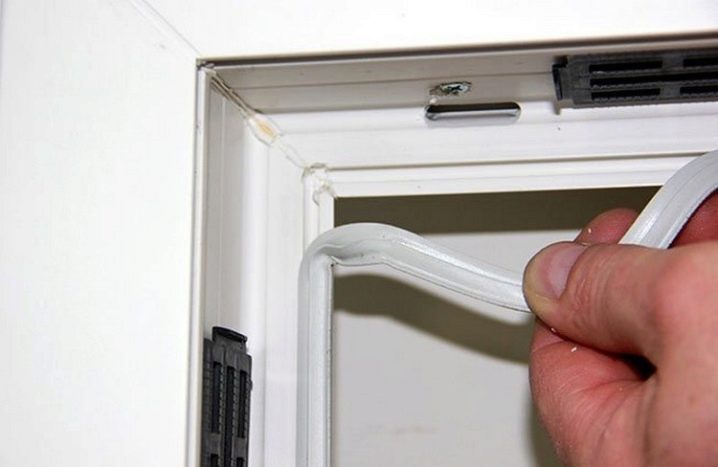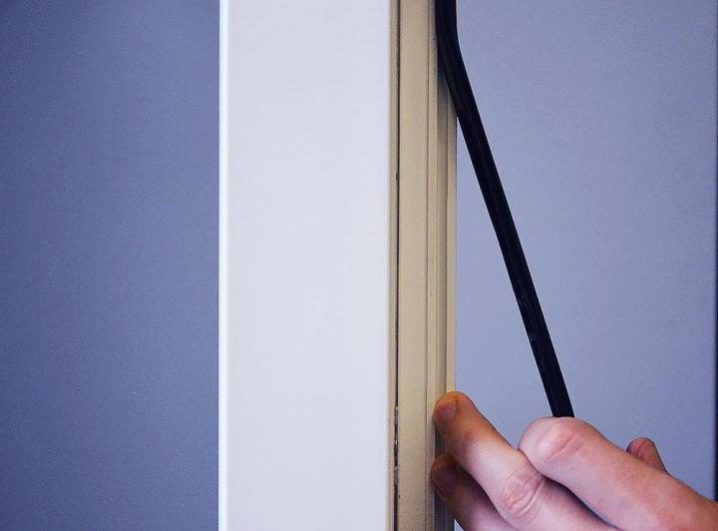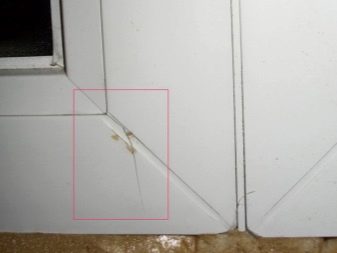Repair of balcony doors
Even high-quality fittings and material of the canvas do not obviate the need to repair plastic and wooden balcony doors as they wear out. In case of significant damage to the loggia, it may be necessary to replace the glass unit and the lock, and other minor malfunctions arise that require elimination. An overview of the most common breakdowns will help you repair the latch and swing-out mechanism, as well as other structural parts quickly and efficiently with your own hands.
How do I replace items?
On the balcony door, fittings are installed, which fail most often simply because they are exposed to significant loads. Most often, the opening mechanisms - the handle and the lock - require replacement. In addition, if you handle it carelessly, you can easily break the glass unit. All these malfunctions at home are quite capable of eliminating every master. You just need to follow simple instructions.
Pen
Replacement of the handle is required if the core breaks in it - the rod used to drive the mechanism. To complete the work, you will have to prepare a Phillips screwdriver. The procedure will be as follows.
- Pry off and slide the bezel cover over the mounting area so that the screws are accessible.
- Unscrew the fasteners.
- Carefully remove the handle with the rod. If it is broken, stuck, push this element out of the hole.
- Select a suitable replacement handle according to the core diameter.
- Install the part in place. Secure with self-tapping screws.
- Replace the plug in its original place.
After replacement, the handle can be tested to ensure correct installation. It is important to check the tightness of the clamp, the ease of turning, the smoothness of the movement.
Lock
If the locking mechanism fails, it is also quite easy to replace it yourself. First you have to remove the handle. After that, the lock can be removed with ease. A strap is unscrewed from the end of the door, the mechanism is removed with it. Then a new lock is installed in the vacated space, if necessary, you can knock out the tightly incoming element with a mallet.
At the end of the work, a handle is installed in place. If the length of the drive does not match, the hole for it is made again, on the other side of the web. The whole structure is fixed with screws and closed with a plug. After replacing the lock, the handle is always turned with force; with repeated use, the problem disappears.
Glass
The fact that the double-glazed window has come to be replaced is usually indicated by the appearance of condensation in its internal chambers. Also, this measure can be applied when updating the canvas with the replacement of a fixed sash with a glazed one. If cracks appear, the glass unit will also have to be changed. It is quite possible to carry out all the necessary work manually, with a minimum set of tools at hand. The procedure will be as follows.
- Remove decorative glazing beads from the canvas. They cover the area where the glass unit adheres to the base. You can pry off the decorative strip with an ordinary screwdriver or a knife blade.
- Carefully remove the glass unit.
- Install the plug-in unit.
- Return the glazing beads to their place. Make sure they fit snugly.
The whole operation takes a minimum of time. Upon completion of the replacement, the protective film is removed from the glass unit. Then the door can be used as usual.
Eliminate wiping, misalignment and sagging
Among the most common malfunctions that owners of plastic balcony doors may encounter, one can note the skew of the sash or its displacement. If the structure is clearly sagging, it is quite easy to repair it with your own hands. Adjusting elements will help to tighten the canvas in the opening in different planes. You need to act taking into account the characteristics of the identified defects.
- Sagging. To raise the sash higher, a hexagonal hole in the lower part of the sash from the hinge side will help. By inserting a key into it, you can rotate the canvas in the desired direction. You can lift the door up or slightly lower it - all movements are done vertically.
- Horizontal offset. To do this, you need to influence the holes in the upper part of the sash, next to the hinges. By turning the hexagon clockwise, you can achieve the offset to the side.
- Sash clamp. If it starts to rub, does not fit tightly or is too tight, adjustment can be made from the side of the handle. Here, depending on the type of fittings, a hex wrench, pliers or a screwdriver are used for adjustment. For the winter, the pressure intensity must be increased by turning the screw clockwise, for the summer it is loosened.
When deciding to fix a sash that has broken, you must first make sure that the problem cannot be corrected by a simple adjustment. Most of the defects associated with a change in the geometry of the blade are eliminated even without dismantling.
What to do about other faults?
Repair of a plastic balcony door, like a wooden one, is often associated with various malfunctions caused by breakage of fittings. For example, if a defect in the latch is found, you can pay attention to the fact that the door does not slam. If the reason is not a cracked seal or the appearance of a mechanical obstruction, it is worthwhile to conduct a more thorough examination. Usually, the door does not fully snap into place due to wear of the element at the end of the lock. There is only one way out - to remove the entire structure by removing the handle and unscrewing the screw on the side of the canvas, and then replace it with a new one.
If, after replacing the latch, the door is not fixed, you should pay attention to the compatibility of the fittings. If you purchased not branded components, but cheaper ones, they may simply not coincide in design with the rest of the components. Poorly fitted parts will create docking problems. Incomplete closing of the opening to the loggia leads to the fact that the panels freeze at the PVC door, with temperature drops with cold glazing, condensation forms.
The sash opened in two positions and does not close
When using the swing-out mechanism in combination with double-glazed windows, the balcony door can be opened for ventilation without completely opening it. The system is considered quite reliable, when closed it is tightly pressed against the protruding elements of the opening. If it starts to fit loosely, stops closing, hangs on 1 lower loop, you need to take action immediately - a long stay in this position can lead to more serious damage.
If the handle is not locked, it moves freely, while the mechanism triggered a double opening, you need to act as follows.
- While holding the sash in weight, press it against the frame as tightly as possible. It is necessary that the structure takes the position that it should have when closing. If an obstacle is felt, it is worth slightly raising the edge of the frame.
- Move the handle to the horizontal plane. Continue to hold the door leaf in the same mode.
- Move the handle to the position vertically up, then all the way down.
- Loosen the wing of the balcony door. It should be closed, hold tightly in the opening. You can then try different handle positions to see if the problem has been corrected.
Sometimes, when two opening mechanisms are triggered at once, the handle does not remain movable, but is blocked. In this case, returning the mechanism to its place will have to be done in a more complicated way. The reason for blocking the handle is the triggering of a special protective mechanism. It is located on the side end, at the level of the handle, looks like a small lever. Having pressed the sash to the plane of the box from the hinge side, the balcony door must be held in this position.
After that, the erroneous opening blocker is transferred to the vertical plane. It must be held in this position, while moving the handle horizontally - it will succumb to the impact. The sash can then be closed. All that remains is to move the handle to the down position, and then check the operation of the swivel and folding mechanism in turn.
The leaf is locked and does not open
When transferring the swing-out mechanism of a PVC balcony door to ventilation and vice versa, you will notice that it refuses to work normally. Situations where the handle is stuck in the closed position are not uncommon. Sometimes the handle fails completely - only its replacement will help to save the situation. But with a noticeable temperature difference in the winter season, the reason for the mechanism to jam can be banal airing.
Moisture accumulated on the seal during opening - condensate formed by the collision of warm and cold air flows - freezes after closing the sash. The balcony door freezes into the box. Of course, after standing for some time in a warm room, the sash will gradually thaw. But sometimes you need to get to the balcony urgently, there is no time to wait. This is where a regular hair dryer comes to the rescue.
With an electrical appliance turned on, it is necessary to warm up the sash around the entire perimeter, while gradually pulling it towards you. After 1-2 minutes, the seal will move away from the door leaf. After that, you need to carefully wipe the door from moisture, cover the seals with a special silicone-based grease.
Creak
Sometimes a balcony door, during operation, begins to emit sounds, indicating that it needs lubrication. Squeaks are usually in the area of the hinges - in the place subject to the greatest stress. It is not necessary to completely remove the door from the opening to eliminate these "symptoms". It is enough just to do the following.
- Remove the plugs from the top of the hinges.
- Using a syringe, pour in the oil recommended by the manufacturer.
- Carry out several cycles of opening and closing the door. This will ensure an even distribution of the lubricant.
- Remove any excess oil that has come out.
- Reinstall the plugs.
If done correctly, the creak will disappear. But it's better not to wait for the sounds to appear again. For prevention purposes, it is recommended to renew the lubricant at least once every 6 months.
Replacing the seal
When drafts appear, the first thing you have to pay attention to is the condition of the sealing tape around the perimeter of the balcony door. It is made of rubber or polyurethane and can dry out over time if not properly maintained. It is possible to prevent premature wear of the sealing tape by applying lubricant to its surface during periods of sudden changes in temperature conditions - in the off-season, spring and autumn.
If the seal is still out of order, you will have to replace it. You should act like this.
- Pull out the rubber or polyurethane tape. It must be removed from the grooves of the block and the sash.
- To clean the vacated places mechanically. Wipe with an organic degreaser.
- Cover the prepared base with adhesive.
- Replace the new sealing strip. It is glued from the corner. Fixation with glue is carried out without tension of the seal, covering the entire perimeter.
It is better to choose European-made rubber and polyurethane products for replacement. They have a longer service life.
Small cracks
When chips, scratches, and other cosmetic defects appear, the plastic balcony door loses its attractive appearance. For metal-plastic, special masking pencils are produced. With their help, easy restoration is performed. Liquid plastic in tubes - from Cosmofen or other brands - can help fill in more serious damage. The deepest cracks are filled with a sealant in the color of the canvas, after the material has dried, the surface is sanded, paint is applied.
It should be noted that any aggregates can be used only after degreasing the surface. It should be remembered that PVC structures are contraindicated in contact with synthetic solvents. Gasoline or alcohol, as well as compositions based on them, will do.
See the following video for troubleshooting a balcony door.
